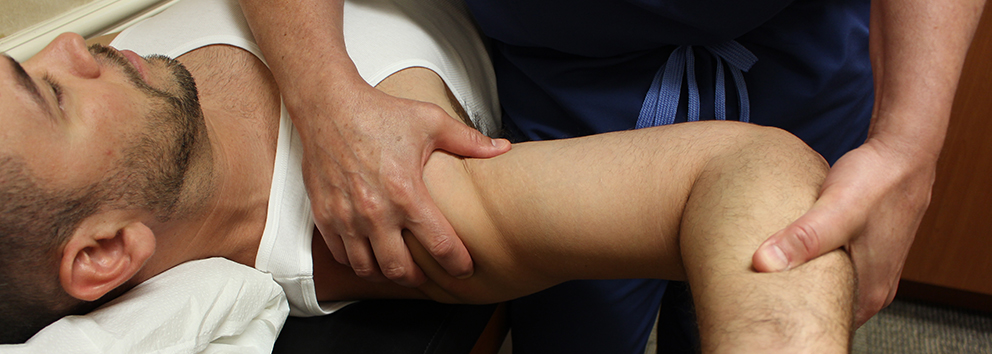
The shoulder, where the upper humerus meets the glenoid, is often referred to as a “ball and socket” joint. Subsequent to an injury, athletes may experience the sensation of instability of this joint. The individual may feel a slipping or giving out of the “ball” from the “socket”. Often this may be a result from a traumatic event, such as a dislocation. This form of instability usually involves only one shoulder and will often result in a labral tear. Other individuals may experience bilateral shoulder instability without an injury, as this may be a result of physiologic laxity of the gleno-humeral joint. Often there is a weakness of the stabilizing muscles and the instability pattern is multidirectional.
Diagnosis is based on a patient’s history, symptoms and careful physical examination provided by our team of physicians. Specific physical examination maneuvers allow for accurate diagnosis and help to eliminate other sources of shoulder pain. X-rays are obtained to rule out associated fractures of the glenoid, calcific deposits, or loose bodies. An MRI is often used to identify any structural injuries such as a labral tear and/ or fracture.
Treatment will depend on the patient’s history, physical exam, and radiographic findings. Often a trial of conservative care is implemented to include activity modifications and physical therapy. Individuals who experience recurrent bouts of instability, despite conservative care, may consider surgical intervention. Surgery generally involves an arthroscopic procedure to repair the torn labrum and capsule to stabilize the shoulder. Surgical outcomes are excellent, with an athlete returning to full activities after approximately 6 months of rehabilitation.





